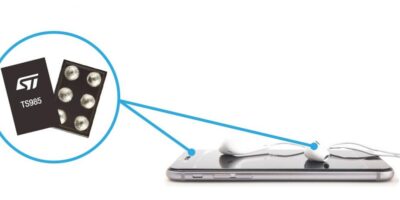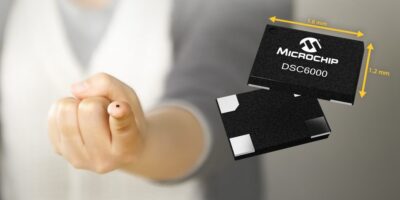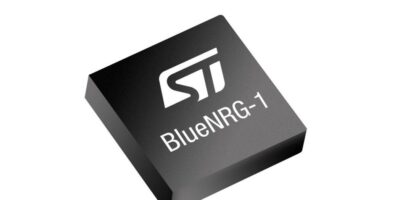Contained in a footprint that is less than 1.0mm2, the TS985 comparator combines battery-friendly micropower performance with enhanced dynamic range and high speed, claims STMicroelectronics.
Wearable
Automatic aligning connectors in textile improve soldier mobility
Invisible power and data connectivity is offered with mag-Net, the auto‑aligning and self‑coupling textile-mounting garment connector that is available from TT Electronics.
Small MEMS oscillators boast lowest power operation
MEMS oscillators from Microchip, the DSC6000 family, are claimed to be the smallest in the industry and with the lowest power consumption over 2.0kHz to 100MHz.
Bluetooth Low Energy SoC is energy-efficient for wearables
The first Bluetooth Low Energy SoC from STMicroelectronics has been announced. The BlueNRG-1 has an integrated radio transceiver, claimed to be extremely power-efficient in the modes frequently used by devices such as beacons when setting up short-duration connections for exchanges like sharing offers with shoppers’ smartphones. The ability to transition quickly between power-saving and active modes extends battery life from months to years. In addition, RF-output power is boosted to +8dBm to ensure clear and reliable communication for optimum efficiency, even in noisy environments.
About Weartech
This news story is brought to you by weartechdesign.com, the specialist site dedicated to delivering information about what’s new in the wearable electronics industry, with daily news updates, new products and industry news. To stay up-to-date, register to receive our weekly newsletters and keep yourself informed on the latest technology news and new products from around the globe. Simply click this link to register here: weartechdesign.com







